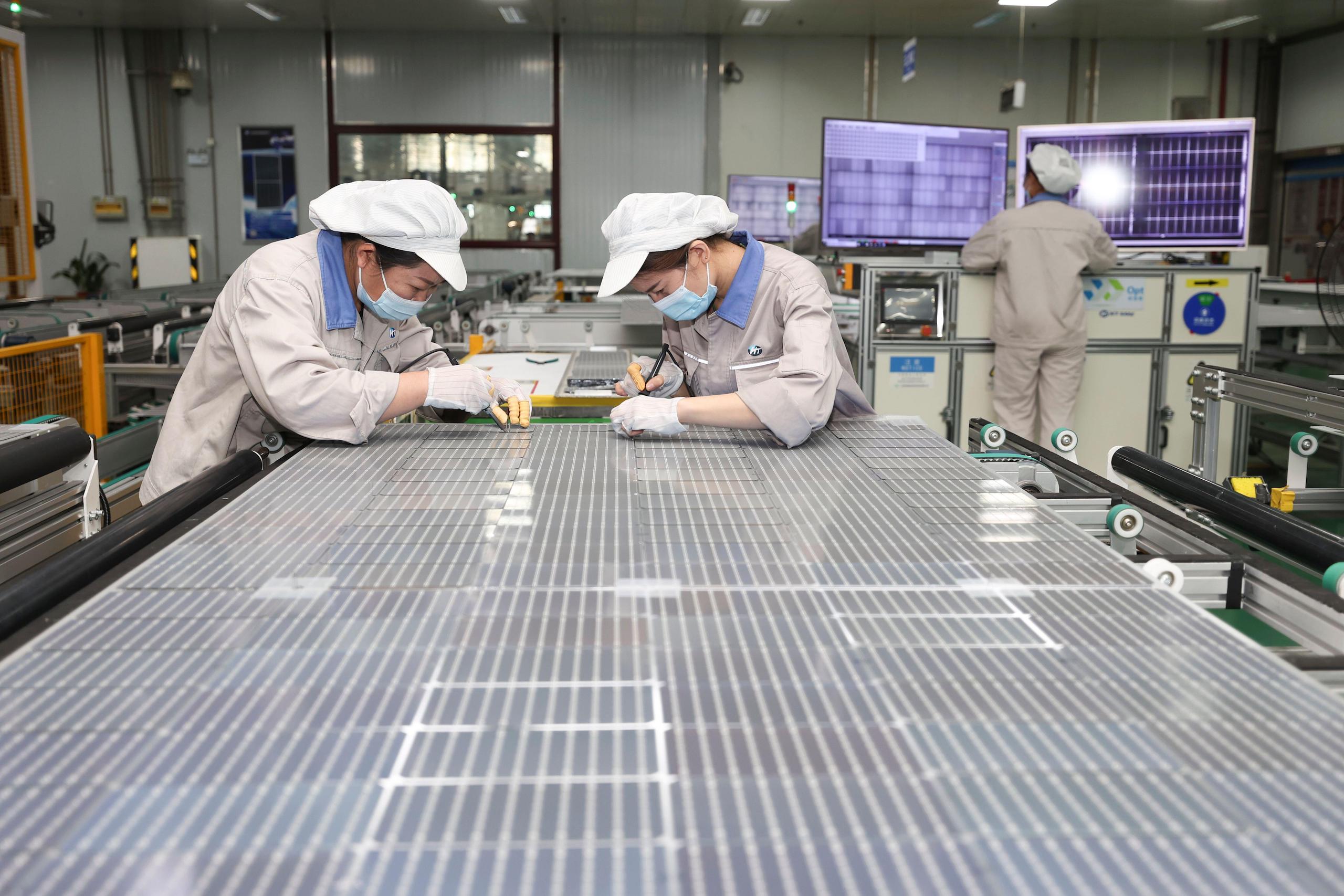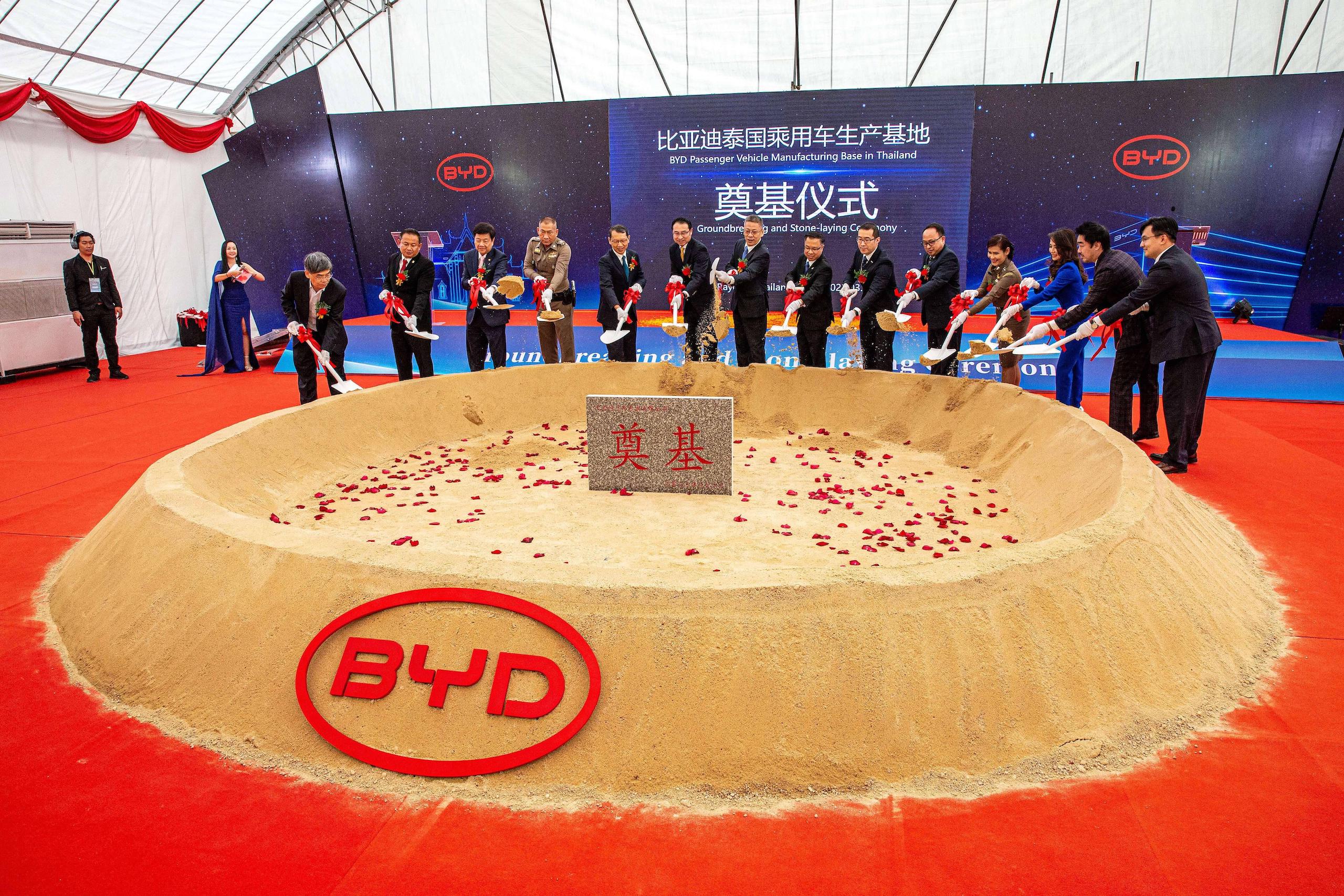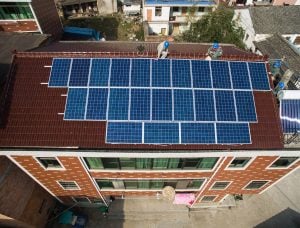Last year, China’s president Xi Jinping introduced the concept of “new productive forces” while on a trip to Heilongjiang where he highlighted the need for the north-eastern province to upgrade its manufacturing industry.
The pursuit of these forces entails accelerating the shift from a development model heavily reliant on resource inputs and energy consumption towards one centred on innovation. It also calls for a gradual reduction of China’s dependence on traditional engines of growth such as infrastructure construction, real-estate investment and low-cost manufacturing and exports.
The core role of the new productive forces in national development planning has since been reinforced in the 2024 Government Work Report, which gave top priority to accelerating their development.
China’s ‘green industries’, which are part of its so-called ‘strategic emerging industries’, are pivotal for shaping the country’s new productive forces.
China officially defined its first version of “strategic emerging industries” in a 2010 State Council decision, Fudan University academics have written. The designation included seven industries:
🌱 Energy conservation and environmental protection
🖥️ New gen IT
🧬 Biologicals
🏭 High-end equipment manufacturing
⚡ New energy
🔧 New materials
🚘 New energy automobiles
We believe that the Chinese model for green, high-quality growth brings a new dynamic to economic development and the response to climate change. It also offers new opportunities for the world, and in particular the Global South. China’s immediate neighbour, Southeast Asia, will play an important role in realising those opportunities.
Rapidly developing green industries in China
In recent years, “green industries” have become a significant engine of China’s economic growth. Such industries have the potential to decouple national economic development from pollution and resource overconsumption. One of their pillars is the manufacturing of renewable-energy equipment, notably for wind and solar power, electric vehicles (EVs) and batteries.
The combined export value of solar cells, EVs and lithium-ion batteries from China – the so-called “new three” exports – passed the CNY 1 trillion mark in 2023, up by 29.9% year-on-year. The strong growth during the first quarter of 2024 of China’s top four provinces for GDP – Guangdong, Jiangsu, Shandong, and Zhejiang – was driven to a large extent by new-three sales.
China’s domestic market plays a big part in driving its green industry growth. For example, the market penetration of new-energy vehicles topped 50% in the first half of April 2024, breaking the market dominance of fossil-fuel vehicles. In the power sector, decarbonisation is picking up pace and the installed capacity of renewable energy is growing rapidly. In the first three months of this year, combined installation of grid-connected wind and solar power in China was 1.12 terawatts, up by 39.3%. As electricity consumption continued to grow rapidly, coal-fired power generation declined.
Surging electricity consumption
The rapid development of green industries, while being a massive boost for economic growth in China, has also contributed to a sharp increase in the consumption of power and demand for materials.
Manufacturing, as the “hardware” side of the clean industries, is energy intensive. It takes a lot of electricity to make lithium-ion batteries, as it does to create the high-temperature environment required to purify crystalline silicon, an important step in solar-cell manufacturing.
Green-tech products like photovoltaics (PVs) and EVs also require significant inputs of raw materials like aluminium, and there is enormous demand for electricity at the upstream end of the industrial chain where these materials are processed. A big factor is the electrolytic process – a hugely energy-intensive link in the industrial production of raw materials such as aluminium and copper.
China’s national electricity consumption reached 9,220 terawatt-hours (TWh) in 2023, an increase of 6.7% year-on-year. The growth of power consumption in emerging industries was particularly striking, surging by 76.8% in PV-equipment manufacturing, 38.8% in new-energy vehicle manufacturing, and 78.1% in battery charging and switching services.
Enhancing the ‘Made in China’ label
Given the enormous scale of China’s green industries sector, especially on the manufacturing side, it will be difficult to meet the sector’s growing energy needs using domestic supplies of clean energy.
Take aluminium as an example. China’s industry has long depended for its electricity supply on ‘captive’, mostly coal-fired power plants – which are off-grid and used exclusively by industrial facilities. To secure more environmentally friendly and sustainable sources of energy, leading aluminium producers have in recent years been shifting production capacity to southern provinces rich in hydropower resources, such as Yunnan. However, this strategy appears to have run its course. Since 2021, insufficient hydropower and ensuing electricity rationing has disrupted production of electrolytic aluminium in Yunnan several times.
With the low-carbon sector booming worldwide, developing countries are eagerly promoting growth in their own green industries. This presents China with an opportunity to boost Global South cooperation links with green industries in developing countries in two ways.
First, shifting some of the “hardware” links in the industrial chain to resource-rich developing countries allows resources to be used more rationally and reduces the carbon emissions resulting from their transportation and processing. Heavy or energy-intensive industries can, in some cases, be relocated to countries with plenty of access to renewables, including in Southeast Asian and African regions where solar, hydro and offshore wind energy are in abundant supply.
This relocation also creates space for developing the “software” side of China’s green industries – producer services sectors such as product design and development, HR management, consulting and advisory services, and IT support – helping move those industries in the direction of a more innovation-centred version of “Made in China”.
Second, restructuring the industrial chain helps with the diffusion of technology and knowledge. China already occupies a leading position in many areas of green tech, including those involved in the production of EVs and solar panels. Through collaboration, China can transfer such technologies to partners in developing countries for localisation. This involves adapting and implementing tech to fit the specific conditions and needs of the partner countries. Such localisation will help those countries upgrade their industries and speed up their green transition.
Southeast Asia: A nexus for Global South cooperation
Southeast Asia has become a major “Go Global” destination for green industries from China in recent years, and this has energised the region’s economic development.
Direct investment and acquisitions by Chinese PV companies have reportedly made Vietnam China’s largest overseas manufacturing base for PV products. In addition to creating large numbers of jobs locally, Chinese involvement has helped to apprentice numerous specialists for Vietnam’s PV industry.
Deeper green-industry collaboration between Southeast Asia and China will stimulate the development of local industry in the bloc, and bring significant opportunities for economic development. Southeast Asia’s PV, battery and electric two-wheeler industries are projected to generate revenues of up to USD 100 billion by 2030. Delivering on this will potentially create over six million new jobs in the region by 2050.
Southeast Asia’s economic and industrial capacity and close bilateral trade ties with China make it a strategic nexus for Global South green-industry cooperation. There are several reasons for this.
To begin with, Southeast Asia’s green-tech market has great prospects for expansion. With a GDP of about USD 3.6 trillion in 2022, if Southeast Asia were a single economic entity it would be the world’s fifth-largest economy, behind the US, China, Japan and Germany. It is estimated that the region will need to invest just over USD 92 billion annually in clean energy through to 2030, to support its economic growth and progress towards net zero.
Secondly, Southeast Asian countries such as Thailand, Malaysia and Indonesia have particularly extensive experience in manufacturing. This strongly supports their smooth integration into regional green industrial chains presided over by China. The highly developed automotive sector in Thailand has attracted international auto brands to build production facilities, and fostered a large cohort of skilled workers and technical personnel. Comprehensive automotive supply chains in Southeast Asia, producing tyres, seats, batteries and other components, will provide solid support for the thriving manufacture of EVs.
Thirdly, China has a close, stable economic relationship with Southeast Asia, and has been the region’s largest trading partner for the past 14 years. Bilateral trade reached a record high in the first four months of 2024, growing by 8.5%. Southeast Asia also maintains close economic ties with the US, EU, Australia, Japan and South Korea. The region’s importance for global trade and international supply chains makes it a strategic nexus for green-tech companies from China, as well as an important market in its own right.
Fourth, China, as a global leader in green industries, has plenty of experience with associated large-scale investments, industrial-chain manufacturing and technological innovation. Southeast Asian countries bring opportunities for Chinese companies to collaborate with international financial institutions and multilateral development banks. The experience of these banks within international markets can dramatically reduce the learning curve for Chinese companies and investors moving into green-industry projects overseas.
‘Go Global’ for green industries
China’s green industries are increasingly mature and internationally competitive, and pushing into overseas markets is a prerequisite for their future development. The importance of Global South cooperation in this process, as a bridge connecting China with other developing countries, is increasingly evident.
With green industries rapidly internationalising, China needs to promptly review and update its relevant policies, shifting from a strict focus on domestic development towards a more strategic awareness of global industrial configurations. Green industrial policy needs both a global perspective as well as focus on developmental bottlenecks at home. This means policies enabling green industry to meet the demands and challenges of international markets with insight and flexibility, while planning systematically for the future layout of the sector globally.
This shift in perspective will guide China’s green technology companies as they invest overseas, helping them to fully access the ample resources and markets of Southeast Asia and other countries of the Global South. It will promote the transformation of China’s green industries from “Made in China” status to “Made intelligently by China”, facilitating the emergence of new productive forces at home while bringing impetus and experience to green development worldwide.
Bringing nuance to ‘overcapacity’
The rapid development of China’s green industries has prompted international concerns about “government subsidies” and “overcapacity”. However, government guidance and support, particularly in the form of incentives such as financial subsidies, have vital roles for emerging industries in their incubation phases. They provide a niche space for clean innovations to grow, compete with more mature technologies in the market and become commercialised.
On the issue of overcapacity, we need a more objective and nuanced perspective. As new industries become increasingly mature and competitive, their developmental pathways gradually reach beyond domestic borders into overseas markets. For export-oriented industries, production capacity tends to exceed domestic demand. Moreover, China’s PV solar industry is currently on the threshold of a generational upgrade. A substantial portion of its excess capacity is concentrated in technology that will soon be superseded by more advanced modes of production.
For a world eager to accelerate its energy transition, the rapid development of China’s green industries has remarkable value globally. A study shows that Chinese manufacturers often focus their R&D on optimising complex production processes and translating innovative ideas into commercialised products. This brings high-quality green goods to the world at affordable prices, making an important contribution to global net-zero efforts.
Amendment: The original version of this article presented Indonesia’s Morowali Industrial Park as a positive example of job creation and economic development. The example was removed on 18 June after the author was made aware of pollution and safety issues related to the park.










